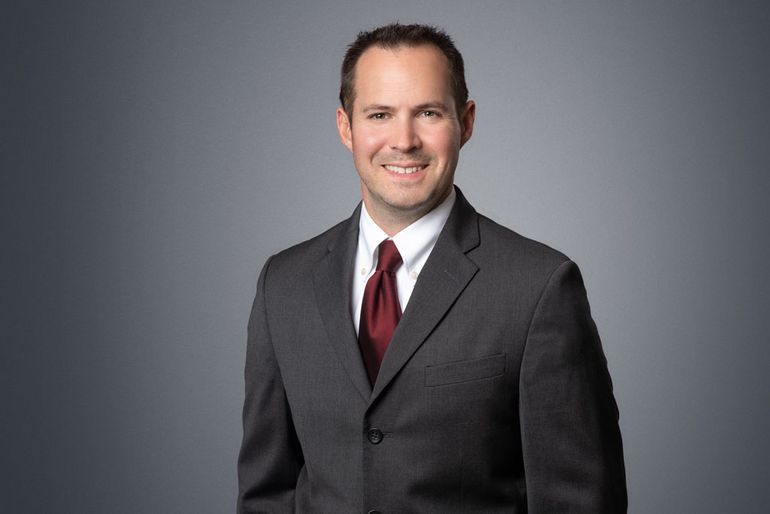News & Insights
Legal Alert

Air District Asbestos Rule Will Affect Demolition Activities for Facilities Damaged by the Los Angeles Wildfires
2025 Land Use, Environmental & Natural Resources Update
6.18.25
Owners and operators of facilities damaged or destroyed by the recent Los Angeles-area wildfires should be aware of the risks posed by toxic contaminant releases during cleanup and, in particular, the regulatory requirements imposed by South Coast Air Quality Management District (Air District) Rule 1403 to protect the public from such releases. Owners and operators are ultimately responsible for compliance with Rule 1403, even when contractors perform most or all the work.
BACKGROUND
Generally, Rule 1403 imposes survey, notification, work practice, and recordkeeping requirements on owners and operators who engage in “demolition” and “renovation” activities to protect workers and the public from the potential release of airborne asbestos fibers. Rule 1403 is clear that “a facility destroyed by fire… remains subject to this rule’s provisions,” and debris cleanup activities may — and often do — qualify as the “renovation” or “demolition” of the facility.
Asbestos, which is a type of toxic contaminant covered by Rule 1403, is commonly found in facilities built or renovated prior to the early 1980s, particularly in roofing and flooring products, caulks, mastics, and insulation, and may also be found in facilities constructed or renovated after that time. When inhaled, asbestos is known to cause damage to the lungs and may result in long-term serious health problems. It has been classified by multiple federal agencies as a human carcinogen and can also cause asbestosis, a chronic lung disease characterized by shortness of breath, coughing, fatigue, and other serious symptoms. Due to these health hazards and its common use in construction and other industries, asbestos was one of the first hazardous air pollutants to be regulated under the Environmental Protection Agency’s National Emission Standards for Hazardous Air Pollutants (NESHAP) regulations in the early 1970s.
COMPLIANCE
Again, owners and operators are ultimately responsible for compliance with Rule 1403, even when contractors perform most or all the work. The risks of noncompliance are substantial. In addition to the health and safety risks posed by improper handling and release of asbestos-containing materials, civil and even criminal penalties are possible. Civil penalties currently start at $5,000 per violation, per day for strict liability violations, and quickly rise to $25,000 for negligent violations, $75,000 for intentional violations, and up to $1 million for corporations that engage in intentional, willful, or reckless violations that cause great bodily injury or death.
In response to the damage caused by the recent Los Angeles-area wildfires, Governor Newsom recently issued executive orders waiving or suspending certain regulatory requirements that may impede rapid response and rebuilding efforts. Rule 1403 has not been the subject of any such order and may not be included in any future orders because it addresses a serious health risk for the public, relief workers, and contractors, and it implements the federal NESHAP regulations, which are not waivable by the state. In recently issued guidance for cleaning up fire-damaged debris, see here, the Air District confirmed that owners and operators that opt out of the “no-cost-to-residents” debris cleanup being conducted by the U.S. Army Corps of Engineers must comply with Rule 1403.
RULE 1403 REQUIREMENTS
Pre-Activity Survey and Notification
Before any demolition or renovation activity may begin, the owner/operator must contract with a Cal/OSHA certified inspector to survey the facility for the presence of asbestos-containing materials (ACM). If the survey identifies any suspected ACM, a sample of that material must be taken and analyzed in a qualified laboratory according to specified procedures. Analysis of suspected ACM is not required if the owner/operator elects to treat it as ACM. If the asbestos survey identifies ACM that will be disturbed by the renovation or demolition work (or the owner/operator elects to treat building materials as ACM), the owner/operator must contract with a Cal/OSHA registered Abatement Contractor to properly address the ACM. The Abatement Contractor must be from a different entity than the certified inspector.
Notification requirements depend on whether the work is categorized as a demolition (the “wrecking or taking out of any load-supporting structural member”) or renovation (any other alteration of a facility). The Air District must be notified prior to the start of any demolition activities whether the survey identified ACM or not. For non-exempt renovation activities, the Air District must be notified only if the initial survey identified ACM that will be removed. Notification is required no later than 10 working days before any work begins, though shorter notification periods may be available for emergency demolition or renovation operations.
Renovation and Demolition Procedures
Rule 1403 contains specified procedures that Abatement Contractors must implement when removing ACM. Generally, Abatement Contractors are free to choose among these procedures, but where ACM has been damaged in a fire, or an owner/operator elects to treat building materials as ACM without a survey or laboratory analysis, they must use “Procedure 5–Approved Alternative.” Procedure 5 requires an Abatement Contractor to develop a customized plan for the removal of ACM from a facility and, importantly, obtain Air District approval prior to the start of any related renovation or demolition activities. The Air District has affirmatively stated that the review and approval of Procedure 5 plans is required even in emergencies and specifically for the cleanup of wildfire debris. To date, the Air District has not released any approved standardized “Procedure 5” plan for wildfire debris cleanup, which means individual plan development and approval is required.
Once renovation or demolition activities have begun, the Abatement Contractor must follow specific requirements for the removal, handling, and disposal of ACM. The owner or operator of the facility being demolished or renovated must keep certain records for at least three years, including copies of survey-related documents, notifications to the Air District, waste shipment records, and Abatement Contractor qualifications.
Key Exemptions
- Owner–occupants of residential single-unit dwellings that personally conduct a renovation are exempt from the Rule 1403 requirements.
- Renovations of single-unit dwellings where less than 100 square feet of ACM will be removed or stripped are exempt from the survey requirements of 1403.
- Renovations where less than 100 square feet of ACM will be removed or stripped are exempt from the notification requirements of Rule 1403.
Allen Matkins will continue to monitor and report on state and local government activities that may affect responses to the Los Angeles-area wildfires, including clean-up and rebuilding efforts.
Authors
Partner
Associate
News & Insights
Allen Matkins Leck Gamble Mallory & Natsis LLP. All Rights Reserved.
This publication is made available by Allen Matkins Leck Gamble Mallory & Natsis LLP for educational purposes only to convey general information and a general understanding of the law, not to provide specific legal advice. By using this website you acknowledge there is no attorney client relationship between you and Allen Matkins Leck Gamble Mallory & Natsis LLP. This publication should not be used as a substitute for competent legal advice from a licensed professional attorney applied to your circumstances. Attorney advertising. Prior results do not guarantee a similar outcome. Full Disclaimer


